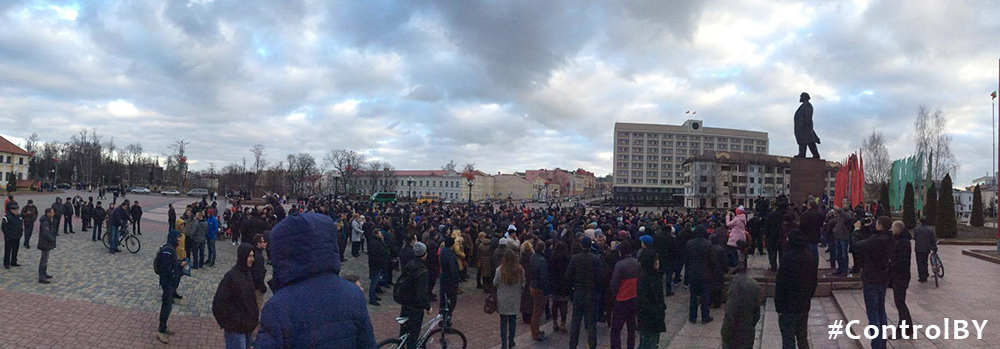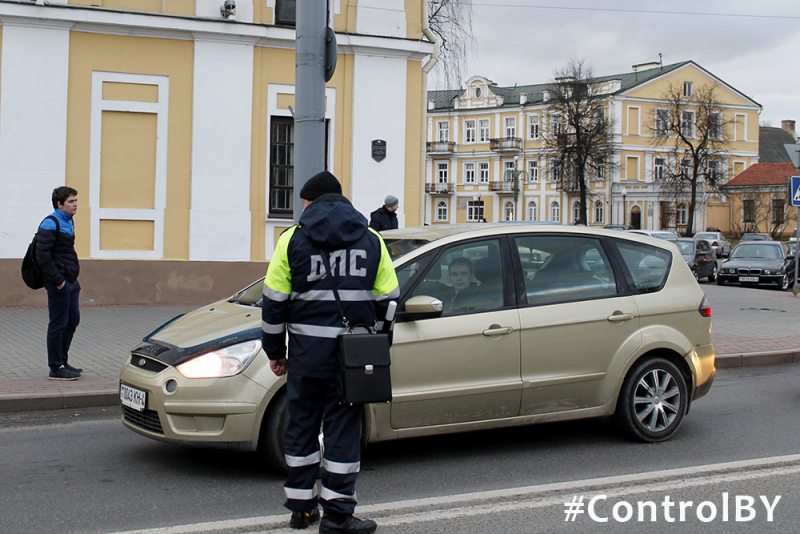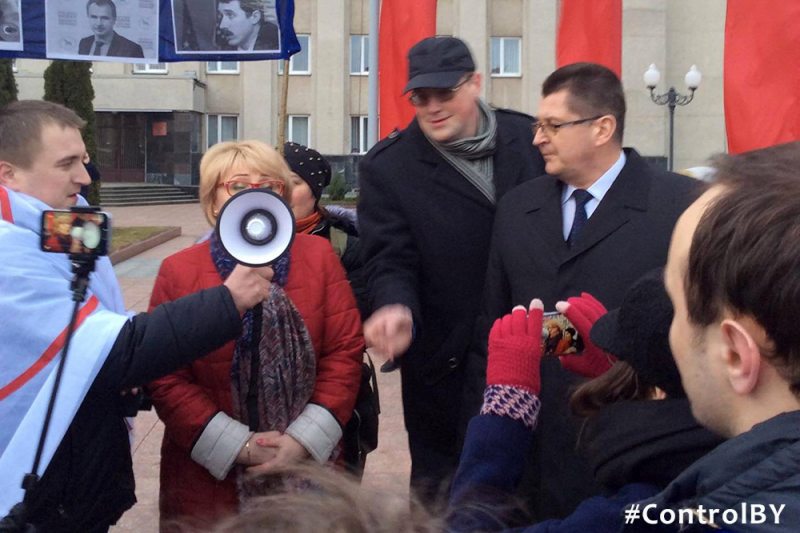Report on monitoring of the March of non-parasites in Hrodna. 15 March 2017
On 15 March 2017, the March of Non-Parasites was held in Hrodna, protesting against Presidential Decree No.3.
Conclusions:
- The mass event was of a peaceful character (an assembly should be deemed peaceful if “its organisers have professed peaceful intentions and the conduct of the assembly is non-violent”). The participants and organisers did not appeal to violence or aggressive actions.
- It is worth noting that 13 participants of the mass event held on 19 of February were prosecuted before the March. This can be regarded as preventive measures before the event.
- It was not possible to identify the law enforcement officials since they were not marked with identification badges, and a considerable part of them were not wearing their uniforms. There is no information on the rationale for such an appearance; the inability of identification may result in the impunity of the police officers in the event of conflicts; it confuses the organisers and participants as to who to contact in conflict situations.
Please note that according to the Guidelines of the OSCE ODIHR "Human Rights Handbook on Policing assemblies", designed specifically for the law enforcement officers, the basic principles of policing assemblies are the following: possession of information, assistance, communication and differentiated approach to the participants of a mass action.
- A positive aspect is the collaboration of Traffic Police officers in providing a continuous movement of the event participants from Dzyarzynskaha street to Lenina square.
Monitoring methodology
Throughout several years RHRPA Belarusian Helsinki Committee and Human rights centre ‘Viasna’ have been regularly monitoring mass events in Minsk on the basis of a thoroughly elaborated methodology, which consists of: recruiting and teaching observers principles of civil control, standards of peaceful assembly and methodology of observing; filling in forms during on-site observations, processing of forms and preparing of a monitoring report. Forms of mass events observations have been jointly developed by human rights organisations. They include questions on the capability of observation for observers and mass media in relation to the attitude of organisers, mass events participants, police officers and the presence of ambulance. Observers may be admitted to observation only by accepting and abiding by rules and principles of the observation (independence and political neutrality; description of facts, not personal opinions, non-interference in the event observed; commitment to the rule of law: rejections of all forms of violence and discriminatory practices; correct behaviour). Whilst executing their duties observers are kept separately from participants. Observers are marked by an ‘observer’ badges and blue jackets.
Preliminary information
It became known from the media and social networks that a mass event was going to take place on 15 March 2017 in Hrodna; the information had been widely distirubuted on the Internet.
During the mass event 5 observers were continuously executing the observation on-site. The observers had been trained accordingly and were marked in a proper way.
The course of the mass event
The following facts were observed throughout the event:
- Upon the start of the event at 18.00 about 150 people gathered at Zhyliber park, including representatives of media and law enforcement officials in civilian clothes.
- The event commenced at 18.20. Journalists were interviewing the participants in a live broadcast. The speakers required to abolish Decree No.3, arguing its contradiction with international norms and the Constitution. Those present were discussing a poor standard of life, arguing against the course of economic policy of the Government of the Republic of Belarus. After that, a representative of the United Civic Party Laurentsyeu launched a resolution that was met with approval by all the participants.
- Around 18.30 an air drone (robot) was noticed above the park.
- At 18.40 the participants of the event formed a column, heading towards Lenina square to the building of Hrodna executive committee. Around 400 participants were present at the movement. The Traffic Police officers did not interfere with the crossing of the traffic way.
- At 18.50 the participants gathered at Lenina square, where the protestors started to address the crowd.
- Around 19.00 three representatives of Hrodna City Executive Committee stepped out of the building inviting everyone to move to the auditorium of the City Council. The participants rejected the proposal and remained on the steps of the building. The activists voiced their demands, after which they passed the resolution to the representatives of the City Council.
- At 19.30 the event came to an end. The participants started to disperse.
- The participants used the following symbols: a white-red-white flag, a flag of the United Civic Party, a banner ‘The raisins are here: photos of politicians Rymasheuski, Lyabedzka, Kavaleu, Syaviarynets’, a poster with a caption “Freedom to Brest anarchists and journalists”.
- The following slogans were used: “Long live Belarus!”, “No to Decree No. 3 – Lukashenko go away!”, “No to Decree No.3”, “Lukashenko, resign”, “Who is the main parasite – Lukashenko the president”.
- There was no interference with the work of media and the observers. The ambulance was absent.
- After the event it became known about two detained participants of the event.
Recommendations
To Law enforcement officials:
*To stop the practice of brutal arrests and harassment of peaceful demonstrators as it contradicts voluntarily undertaken obligations of the Republic of Belarus in the field of human rights;
*In accordance with Article 5 of the Law of the Republic of Belarus "On the Internal Affairs Bodies", "the activities of internal affairs bodies shall be public." Guided by this standard, we suggest that all officials whilst guarding public order during mass events must wear uniforms and be identifiable by means of identification (badges);
*To designate a contact person from the number of police officers for the communication with observers, media and organisers of mass events;
To legislature:
*To initiate amendments to Belarusian legislation to bring it into compliance with international standards of peaceful assemblies.




















